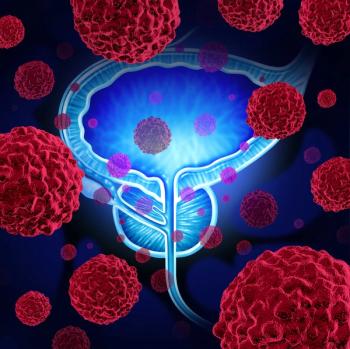
Adding Olanzapine to Antiemetic Therapy May Help With CINV Incidence
Complete responses were numerically higher without significance in standard triple antiemetic therapy with olanzapine vs placebo.
Japanese investigators found that the addition of olanzapine (Zyprexa) to standard triple antiemetic therapy prevented carboplatin-induced nausea and vomiting at a higher rate than placebo, but was not clinically significant, in patients with thoracic cancers receiving carboplatin-based chemotherapy, according to phase 3 results published in the Journal of Clinical Oncology.1
Results showed that overall complete response (CR) rate was higher in patients taking olanzapine (86.9%; 95% CI, 80.9%-91.5%) with antiemetic therapy versus those taking placebo (80.6%; 95% CI, 74.0%-86.1%; P = .116). However, a statistically significant increase in carboplatin-based nausea prevention was observed in the monotherapy group vs placebo, to the effect of 88.6% (95% CI, 82.9%-92.9%) vs 75.0% (95% CI, 68.0%-81.1%; P < .001) in the overall phase and 89.7% (95% CI, 84.2%-93.8%; P < .001) vs 75.6% (95% CI, 68.6%-81.6%; P < .001) in the delayed phase, respectively. No adverse events of grade 3 or higher were observed in either group.
Patients with pathologically confirmed malignant tumors (n = 378) were enrolled between August 15, 2019 and June 30, 2023 and were randomly assigned 1:1 to receive olanzapine (n = 188) or placebo (n = 190). Following assignment, 13 and 9 patients in the experimental and placebo groups dropped out of the study due to deviation from protocol, a worsening of general condition, or withdrawal of consent. An additional patient in the placebo group discontinued treatment due to an anaphylactic reaction to an anticancer agent.
Oral administration of olanzapine or placebo occurred on days 1 to 4 once daily following an evening meal. Patients across arms received standard prophylactic antiemetic therapy; a 5-HT3 RA and 4.95 mg IV dexamethasone on day 1, as well as aprepitant administered at 125 mg on day 1 and 80 mg on days 2 and 3 once daily. 5-HT3 RA dosing consisted of either 0.75 mg IV palonosetron or IV granisetron orally at 2mg or 4µg/kg.
Efficacy was determined within the first 120 hours of the first course of the first chemotherapy cycle. Patients completed a questionnaire regarding vomiting frequency, nausea severity and presence, and loss of appetite on a 4-point Likert scale, with 0 indicating absence up to 3 indicating a severe condition, every 24 hours. Every emetic episode was tabulated as an occurrence and additional rescue antiemetic therapies were recorded by medical staff for the duration of study.
The primary end point was CR rate in the overall phase, denoted by 120 hours following start of chemotherapy. Secondary end points include CR rate in acute and delayed phases, categorized as the first 24 hours and 24 to 120 hours, respectively; proportion of nausea free patients; complete control (CC) rate; total control (TC) rate; proportions of patients without appetite loss across phases; and safety.
CC was achieved at a higher proportion in the olanzapine group (85.1%; 95% CI, 78.8%-90,1%) vs the placebo group (77.8%; 95% CI, 71.0%-83.7%; P = .097) in the overall phase.
Additionally, TC was achieved in 83.9% (95% CI, 77.5%-89.1%) of the olanzapine group and 74.4% (95% CI, 67.3%-80.7%; P = .034) of the placebo group. Furthermore, absence of appetite loss was observed in 42.3% (95% CI, 34.9%-50.0%) and 22.2% (95% CI, 16.4%-29.0%) in each group, respectively (P < .001).
“In conclusion, the addition of olanzapine 5 mg once daily to standard triple therapy with aprepitant, a 5-HT3 RA, and dexamethasone did not significantly improve the CR rate in patients receiving carboplatin-containing chemotherapy. However, the addition of olanzapine improved the control of nausea in patients treated with carboplatin, and this might represent an effective and feasible prophylactic strategy for nausea,” Naoki Inui, MD, PhD, of the Hamamatsu University School of Medicine, and coinvestigators concluded.
Reference
Inui N, Suzuki T, Tanaka K, et al. Olanzapine plus triple antiemetic therapy for the prevention of carboplatin-induced nausea and vomiting: a randomized, double-blind, placebo-controlled phase III trial. J Clin Oncol. Published online before print June 04, 2024. doi:10.1200/JCO.24.00278
Newsletter
Stay up to date on recent advances in the multidisciplinary approach to cancer.

























































































